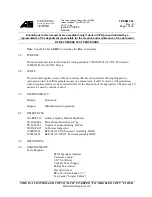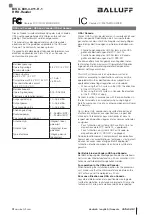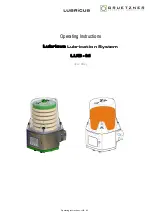
Section 6. Data Error Detection
6-2
0
No Signature type used.
1
CRC16 standard. Polynomial x
16
+x
15
+x
2
+1.
2
CRC16-CCITT standard. Polynomial x
16
+x
12
+x
5
+1.
3
CRC16-CCITT-IBM (Tag Receiver).
4
CRC32 standard.
Polynomial
x
32
+x
26
+x
23
+x
22
+x
16
+x
12
+x
11
+x
10
+x
8
+x
7
+x
5
+x
4
+x
2
+x+1.
5
CSI Signature (see Appendix C of the CR10X Manual).
6
Checksum using modulo 256.
7
Checksum using modulo 8192 (See Section 5 of the CR10X Manual).
8
Checksum which performs exclusive OR on the first byte and then
each succeeding byte until all bytes are read. The result is the
checksum ‘g8’.
9-255
For future use.
Gn
This filter type can be added to the filter string to mark the end of the string and
the point where the sensor signature should be. It also sets the data type to use.
When this filter is done, the signature returned from the sensor will be
converted into a standard data type, so the SDM-SIO4 can compare the original
signature it calculated to the one the sensor returned. If the two signatures
match, then the data is ready for the datalogger to collect, but if they do not
match, the data will be removed, as it will be considered to be corrupt data (if
no other data is ready for the datalogger to collect then -99999 for floating
point or 255 for single-byte characters will be stored into the datalogger input
location).
From the programmer's point of view, the datalogger could be set up to do one
of the following:
1.
Poll the SDM-SIO4 to see if data is available.
2.
Read the corrupt values as -99999 or 255 into locations and just store them
as normal.
3.
Read the values, check to see if they are -99999 or 255, and if so then ask
the device connected to the SDM-SIO4 to re-send the data. Note that the
removal of corrupt data in this way will only work if the
Data Set
filters are
used. Since Gn is always at the end of a data set, the data will always remain
available for collection by the datalogger unless you define another data set
with the ‘x’ filter.
n can be in the range of 0-255 which is the data type to use.
The data types that the SDM-SIO4 can deal with are as follows:
0
No data type or check
1
8-bit binary. Expects 1 byte
2
16-bit binary least significant byte first. Expects 2 bytes
Содержание SDM-SIO4
Страница 6: ...SDM SIO4 Table of Contents iv This is a blank page ...
Страница 12: ...Section 1 Introduction 1 6 This is a blank page ...
Страница 16: ...Section 2 Installation and Hardware Set Up 2 4 This is a blank page ...
Страница 26: ...Section 3 Understanding How the SDM SIO4 Handles Data 3 10 This is a blank page ...
Страница 32: ...Section 4 Programming the SDM SIO4 4 6 This is a blank page ...
Страница 62: ...Section 5 Programming the Datalogger 5 30 This is a blank page ...
Страница 76: ...This is a blank page ...
Страница 81: ...This is a blank page ...
















































